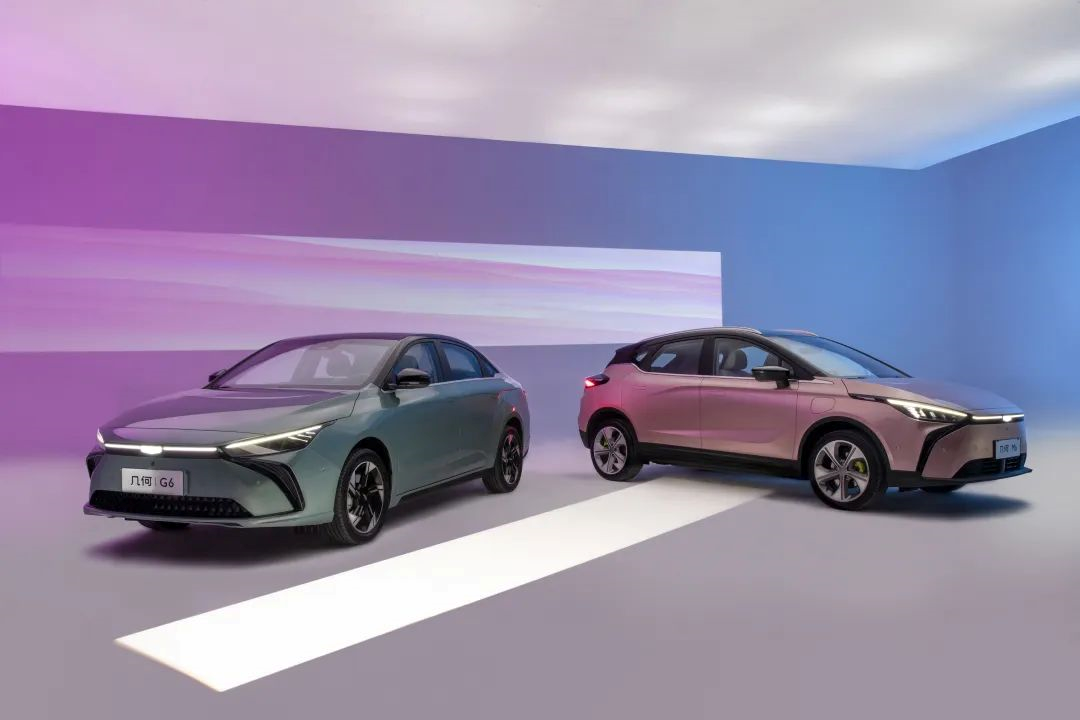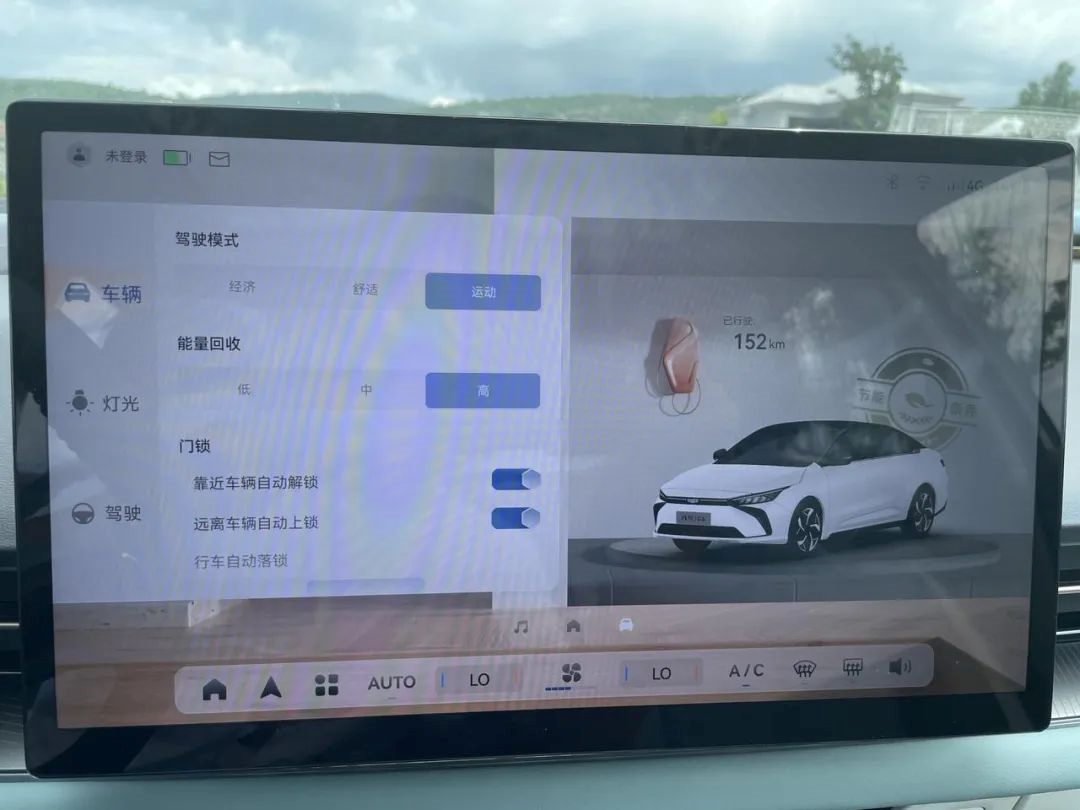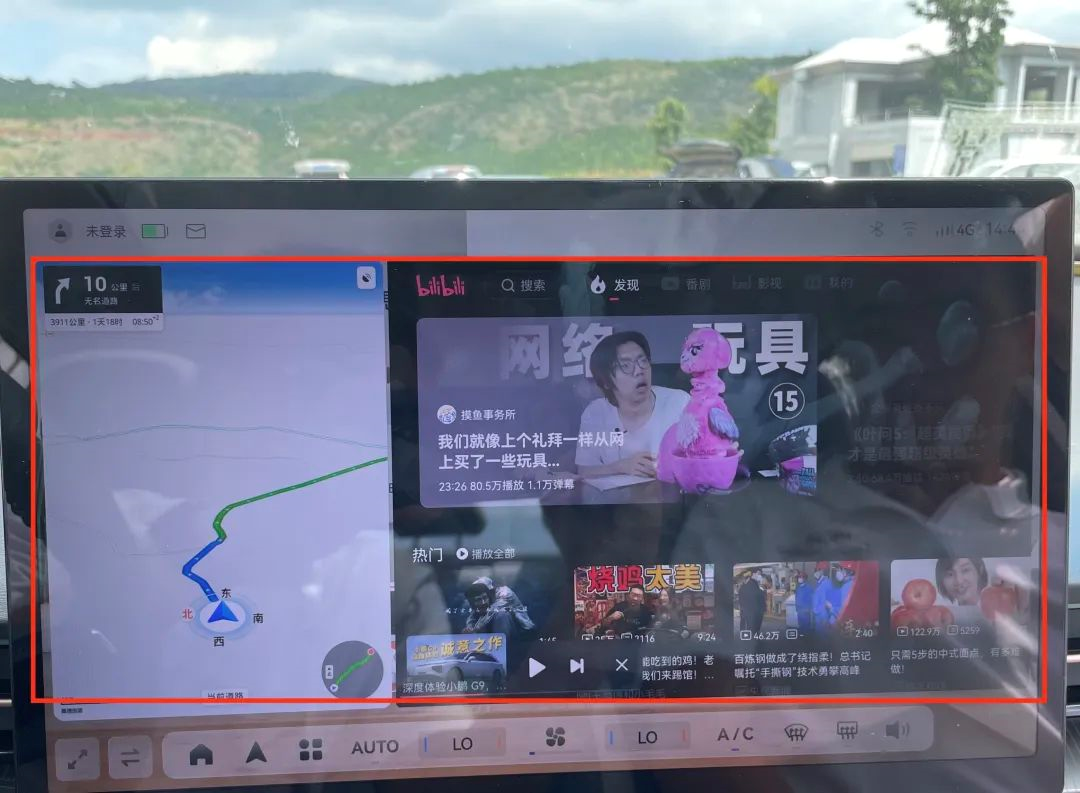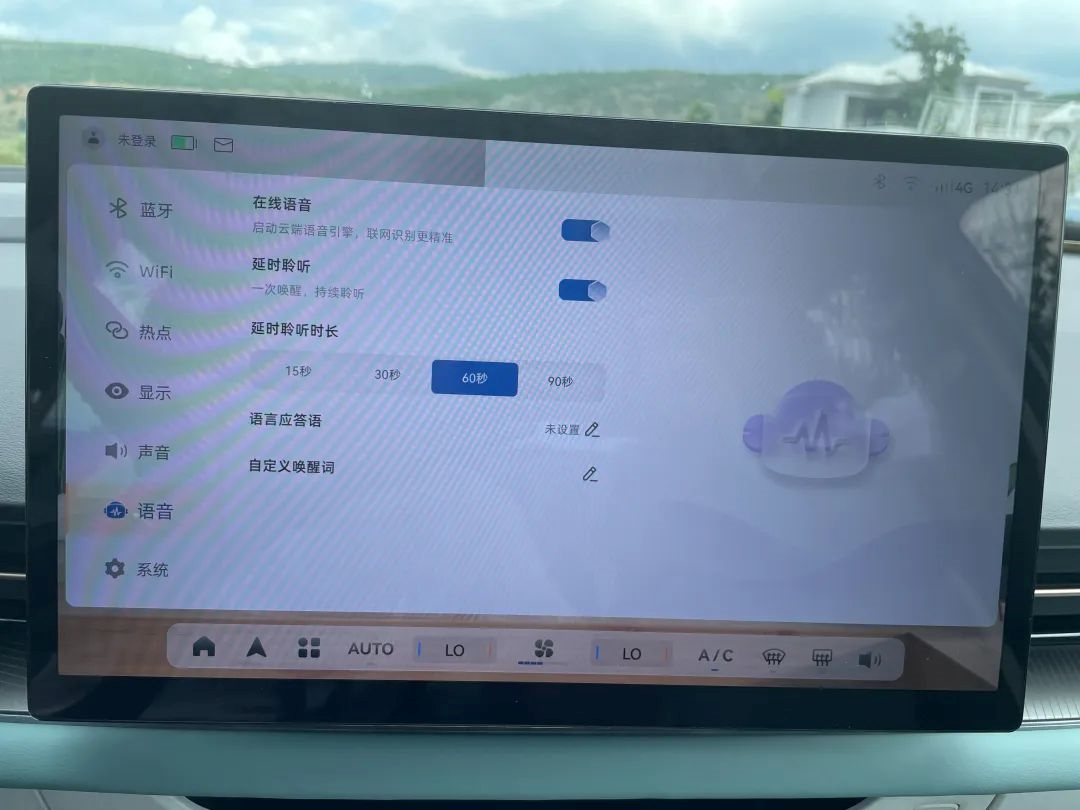Author: Xiao Dong
Editor: Chris
Before the National Day holiday, I went to Dali, Yunnan to test drive the upcoming Geely G6/M6, which are the new twin models from Geely. During the test, I drove the sedan version, Geely G6, while the Geely M6 is an SUV. The two models are almost the same in terms of design, hardware, and intelligent cabin, and even their prices are exactly the same.

During the previous Chengdu Auto Show, Geely G6/M6 had already begun pre-sales, and their prices were as follows:
- Geely G6 Standard Range: CNY 152,800
- Geely G6 Long Range: CNY 174,800
- Geely M6 Standard Range: CNY 152,800
- Geely M6 Long Range: CNY 174,800
Before I came to this trip, I had heard news about Geely’s cooperation with Huawei’s Harmony operating system (OS), so the first thing I did when I received this car was to see how far the Harmony OS could go in a car around CNY 150,000. The conclusion is a bit surprising – the Harmony OS is quite impressive.
The Best Intelligent Cabin Under CNY 150,000?
The Geely intelligent cabin, built on top of the Harmony OS, left a deep impression on me.
Although it is based on the Harmony OS, it is not “outsourced” like the Haven series. The UI and interaction of Geely’s intelligent system are still designed by Geely’s internal team.
First of all, the UI interface is simple and clear, with the user, power, and notification information displayed in the upper left corner, while the upper right corner shows Bluetooth, WIFI, signal, and time. The bottom menu bar includes common functions such as home, navigation, application interfaces, and air conditioning, and the icon graphics are very clear and easy to understand.

Secondly, the interaction design is very user-friendly. The main screen area is dominated by three themes: music hall, living room, and garage, which are divided into entertainment, basic information, and driving settings. The most commonly used functions are designed for direct access, making the interaction logic very clear and reducing the complexity of multi-layer interaction. However, there is a small drawback to this theme-based desktop, which is that the most commonly used navigation function cannot be directly displayed on the desktop. Similarly, the Haven series also has this problem, but fortunately, the voice assistant experience of the Geely cabin is excellent, and we will discuss it later.Let’s talk about these three themes using the garage theme as an example. The left side is divided into car control, lighting, and auxiliary driving control, while the right side displays a 3D model showing real-time information such as the car door status and mileage. However, I personally feel that there is still a lot of room for exploration in this area.

In addition, sliding down reveals quick controls that integrate commonly used functions, and users can customize and edit function options.

Of course, the biggest advantage of Harmony OS is that you can see a Huawei app store on the car system, and in this store, you can basically find most commonly used software applications, saving a lot of trouble compared to having to manually install third-party apps one by one for other brands.

At the same time, this screen also supports adaptive split screens and the ability to switch between left and right split-screen content. The only drawback is that when playing videos, they cannot be displayed in full screen, as the Dock bar at the bottom and the menu bar at the top still exist, which affects the visual experience.

In my experience, this car system is currently very fluid and smooth. It is understood that during the development and iteration of the car system, engineers have repeatedly balanced fluidity and functionality, so that fluidity will still be an important consideration in future OTA updates. In terms of hardware, the chip uses the Kirin 9610 A, with 8 GB of RAM and 128 GB of storage memory.
In addition, the seamless integration of Amap is really worthy of praise. As long as the Amap is upgraded to the latest 12th version and is logged in using the same account on both the car and mobile devices (not limited to the phone operating system), navigation on the phone can be directly synchronized to the car system, making it very convenient for scenarios such as directly navigating to a location shared via WeChat.The most surprising feature of this car navigation system is its voice assistant. Although it is powered by Harmony OS, I even feel that it is better than the voice assistant in the Q&A series. Voice functions such as 90s wake-up-free, visible-to-speak, continuous dialogue, and semantic recognition have almost become standard features of intelligent cockpit models, but the user experience of different models can vary widely.

The voice assistant of the Geely Geometry G6 has high recognition accuracy, fast execution speed, and high voice permissions. For example, driving mode switching and other driving functions can also be controlled through voice assistants. The completeness of the feature of visible-to-speak for third-party apps is also relatively high. New commands can be added or changed at any time during execution, and it supports double-tone recognition.
It can be said that the voice assistant function of the Geely Geometry G6 is almost an TOP-level player in the current car models. Of course, there is still a certain gap when facing the cloud players like the XPeng G9.
With the support of Harmony OS, the Geely Geometry G6’s intelligent cockpit is very handy to use, with excellent UI design, clear interaction logic, a large number of third-party applications, and voice assistants’ recognition and response speed are all above the current mainstream level. In addition to ensuring excellent experience with the above functions, a long press on Xiaohe’s assistant (voice assistant virtual image) will make a heart gesture, and the vehicle model on the instrument panel and HUD will have a tail flame effect when stepping on the accelerator. From these small details, it can be seen that Geely’s software engineers have hidden many “little thoughts” when developing this cockpit system.
Besides the cockpit?
Let’s first talk about the appearance. This time, Geely Geometry G6 adopts a brand-new design language for its front face, with a through-type daytime running light and a luminous logo. The rear end is also “harmonized” in many ways, which is indeed much better-looking than its big brother Geely A.

In terms of body size, the Geely Geometry G6 is exactly the same as the Geely A Pro, with a length, width, and height of 475218041503 mm, and a wheelbase of 2700 mm. The legroom in the second row can be close to 2 fists, but the headroom is a bit compact. The depth of the trunk is long, but the height is not high, but there is still some storage space under the cover plate.
 Apart from the Harmony OS cockpit, the interior of the Geely Geometry G6 has also been renovated.
Apart from the Harmony OS cockpit, the interior of the Geely Geometry G6 has also been renovated.
According to official sources, the car features a “LOFT-style central console” with cup holders positioned at the forefront of the center console. Next to the hazard lights, there is a Type-C port and a USB-A port for charging, which is a nice detail. In addition, the center console is equipped with a 15W wireless charging pad, and the armrest box can slide according to the needs of elbow support, releasing some storage space below. As for the gear shifting, it adopts a classic knob design.
The combination of green and white interior colors, together with a 10.2-inch instrument panel and a 14.6-inch central control screen, creates a high-tech atmosphere in the front cabin.
The front sunroof can be closed with an electric sunshade, but the large rear glass may still allow for some head exposure during hot summer days.
During the test drive by the Geely officials, the planned route included three types of road conditions: urban, highway, and mountainous areas. The entire journey from the hotel to the toll station on the highway covered a distance of 50 kilometers. The initial range indicator was 606 km, which eventually dropped to 556 km. At first glance, I suspected the accuracy of the mileage display. Yet, the average power consumption of Geely Geometry G6 was only 12 kWh per 100 km while carrying three adult passengers with automatic air conditioning, which is still impressive. However, at that time, the temperature in Dali was relatively mild, which might have benefited the range performance.
During my entire drive, the average power consumption was around 13 kWh per 100 km. Assuming an extreme power consumption rate of 15 kWh per 100 km, the endurance boundaries of the long-range version and the standard version of Geely Geometry G6 using 70-degree and 53-degree batteries are about 467 km and 350 km, respectively.## Translation
In terms of power, the 150 kW front motor of the Geely Geometry G6, which is positioned as a compact car, has almost no difficulty achieving the official 0-100 km/h acceleration time of 6.9 seconds. The power at the beginning is very sufficient. I also tried to accelerate after 120 km/h. It’s not a problem to overtake other cars on the highway, but it feels a bit strenuous when accelerating beyond 130 km/h. The tire noise suppression is good, but the wind noise at high speeds is still quite noticeable.
The initial braking strength is not great and belongs to the linear type. Even if the kinetic energy recovery is set to strong, the drag feeling is not particularly obvious. If set to low, it is basically in a sliding state, which is quite friendly to users who switch between electric and fuel cars.
One point of criticism is that the steering wheel of the Geely Geometry G6 is too light. Although it will become heavier at high speeds, it still lacks texture when driving at 40-60 km/h.
The overall chassis tuning is biased towards comfort. However, the upper limit of the combination of the front MacPherson and the rear torsion beam suspension is not high. The performance on continuous undulating roads and continuous deceleration strips is somewhat unsatisfactory.
In terms of advanced driving assistance system (ADAS), because the hardware is not strong, all models adopt a front camera-based solution without millimeter-wave radar. Therefore, I personally recommend using it on enclosed roads with clear lane lines. I also used the ADAS mode for a while. The longitudinal control performance is good, and it does not overcorrect laterally. However, it is not competent when encountering undulating road surfaces or curves. In summary, when using ADAS at this stage, pay attention to road conditions.
It is worth mentioning that the visual performance of the Geely Geometry G6’s ADAS is good. Models of pedestrians, bicycles, trucks, SUVs, and cars are all built, which gives drivers enough confidence.
Conclusion
The Geely Geometry G6, starting at a price of 150,000 yuan, is positioned quite accurately for young people aged 20-35. The fresh and clean exterior and interior design, the smart cockpit based on Harmony OS to create a sense of technology, and the relatively good driving experience and actual battery range are the strengths of the Geely Geometry G6/M6. The most important issue for the G6/M6 is still price. Facing the siege of the BYD Qin/Yuan and Aiways S/Y, can the Geely Geometry G6 stand out with its intelligence advantage in the C-end market?
This article is a translation by ChatGPT of a Chinese report from 42HOW. If you have any questions about it, please email bd@42how.com.
